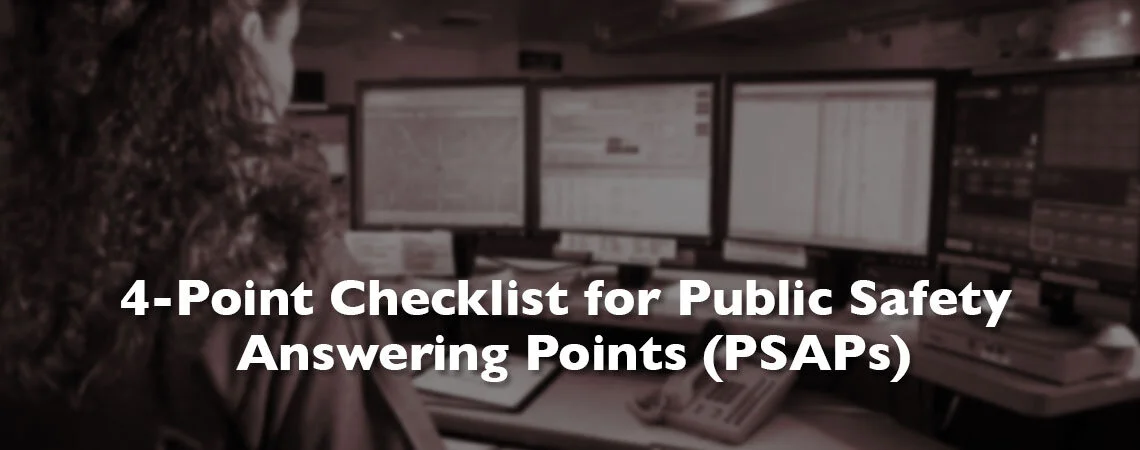4-point checklist for public safety answering points (PSAPs)
You’re committed to increasing cardiac arrest survival in your community — and the team working in your communication center plays a huge role in making that happen. But what do they need to better patient survival rates?
Below is a checklist of the four essentials your public safety answering points (PSAPs) need to maximize their effectiveness when handling cardiac arrest calls.
#1: Leadership
Success starts from the top down, and that’s why leadership commands the process. Your leaders are responsible for articulating their organizational vision, setting high standards and creating a culture of excellence, according to Julie Buckingham, Emergency Medical Dispatch Quality Improvement Manager at King County EMS.
Says Buckingham, “For survival rates to improve in any community — if we want to get it even 5% higher — changes must be made, whether they’re minor or significant. And there is a process for change that comes from leadership.”
For example, if your fire chief is excited about a new initiative, but the director of your communication center is not, chances are your team is going to hit a wall when it comes to successful implementation. Before rolling out a new protocol or program, leaders must first agree on a united vision for success, then set goals, assemble teams and build accountability around that vision. And it’s their role to make it a priority to allocate funds for efforts like these. You should count on your leaders to build the expectations, and make them happen.
#2: Protocols
Communication centers use structured EMD guidelines to triage medical calls, so they can rapidly identify needs and dispatch a team. These guidelines dictate the protocols every step of the way, and they are the most important tools PSAPs use.
Whether the guidelines are computer-based or on a flipchart, they are critical for establishing patient care. Says Buckingham, “It’s what they use to determine the priority of the patient — what units need to go and how fast. And it also gives them pre-arrival instructions, which can be anything from CPR to childbirth to applying pressure to a wound.”
If you’re expecting your team to perform a job and be successful at it, you have to give them the resources to do it. There’s not one standardized set of guidelines. There are several EMD guidelines on the market. But because these guidelines are typically expensive, money often drives the decision. That’s where commitment comes it. Adds Buckingham, “You can’t build a house with a screwdriver. At some point, you’ll need the right tools to complete the job.”
Some agencies even create their own guidelines to meet their specific needs — as long as they keep everyone on the same page.
#3: Commitment to training
Success is not providing simply basic training, but continuous ongoing training throughout the year. Creating an environment for practical, scenario-based training provides telecommunicators with a safe space to perfect the skills they need to improve. A training program is essential, but it will only work if you sustain it.
It’s important to keep in mind that your training program doesn’t have to be fancy or involve high-tech tools. It doesn’t have to be a huge financial setback. Training can be as simple as organized role playing. It’s vastly better to do something rather than nothing.
Don’t overlook the value of field-based training. Too often, telecommunicators are confined inside the walls of the communication center. So why not give them the opportunity to see what happens on the other side of the call? This experience allows them to interact with EMS technicians and grasp the larger picture.
#4: Quality Improvement process
Continued success cannot be achieved without a strong focus on continuous quality improvement. That doesn’t mean your QI process needs to be long and complicated. Focus on the variables that are important, says Buckingham, “the things that most impact outcome.” From the time a call was answered, how long did it take your telecommunicator to recognize the patient was in cardiac arrest? How much time passed before administering the first compression? If you only look at those two things, you’re off to a great start in terms of measuring and improving.
One of the biggest challenges with QI is that someone must spearhead the process. That usually falls on a supervisor, who’s typically already busy managing schedules or dealing with calls from the chief. QI tends to get treated as an ancillary function. We’ll get to it if we have time. But there needs to be a commitment from the agency that QI is going to happen, along with the necessary resources to make it happen.
An important caveat from Buckingham: Be careful not to tie discipline into your QI. She says, “You want your people to be open to feedback, not wary of the process. Creating that type of positive culture goes back to strong, committed leadership.
View every call as an opportunity to improve.
When your PSAP receives a call, the telecommunicator’s reaction is a direct reflection of your center’s culture. By ensuring your leadership, protocols, training and quality improvement processes are all working in sync, you’re doing your part to help generate more success stories — and send more patients home to their families.
The Resuscitation Academy











There are opportunities to significantly increase survival from out of hospital cardiac arrest. Implementation of existing standards and training programs for telephone CPR and high-performance CPR will do much to improve survival.